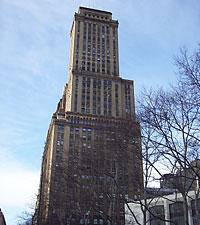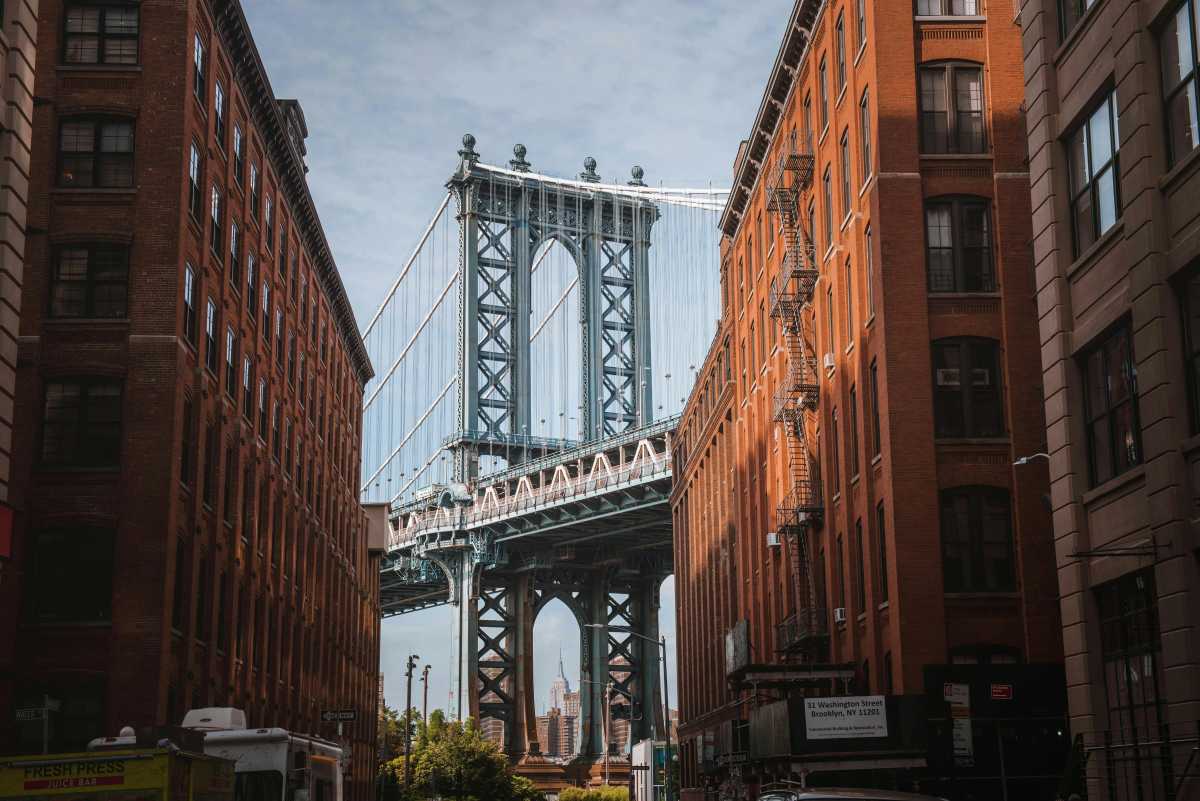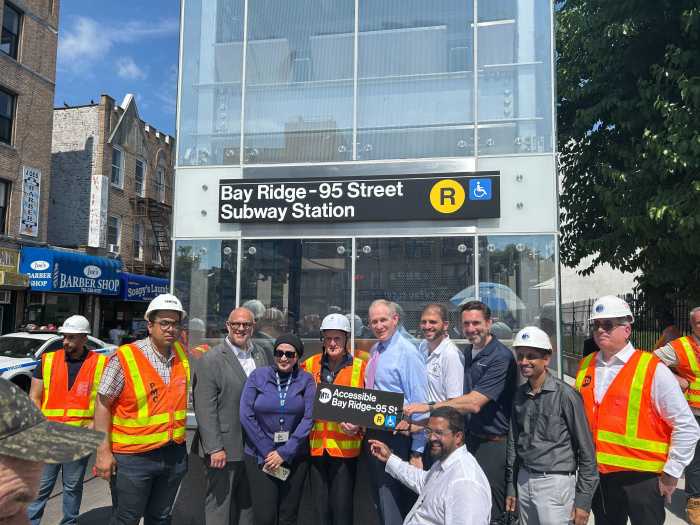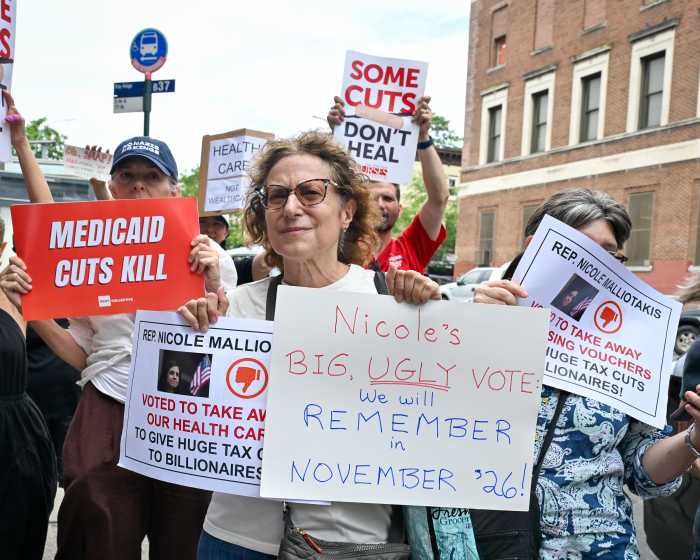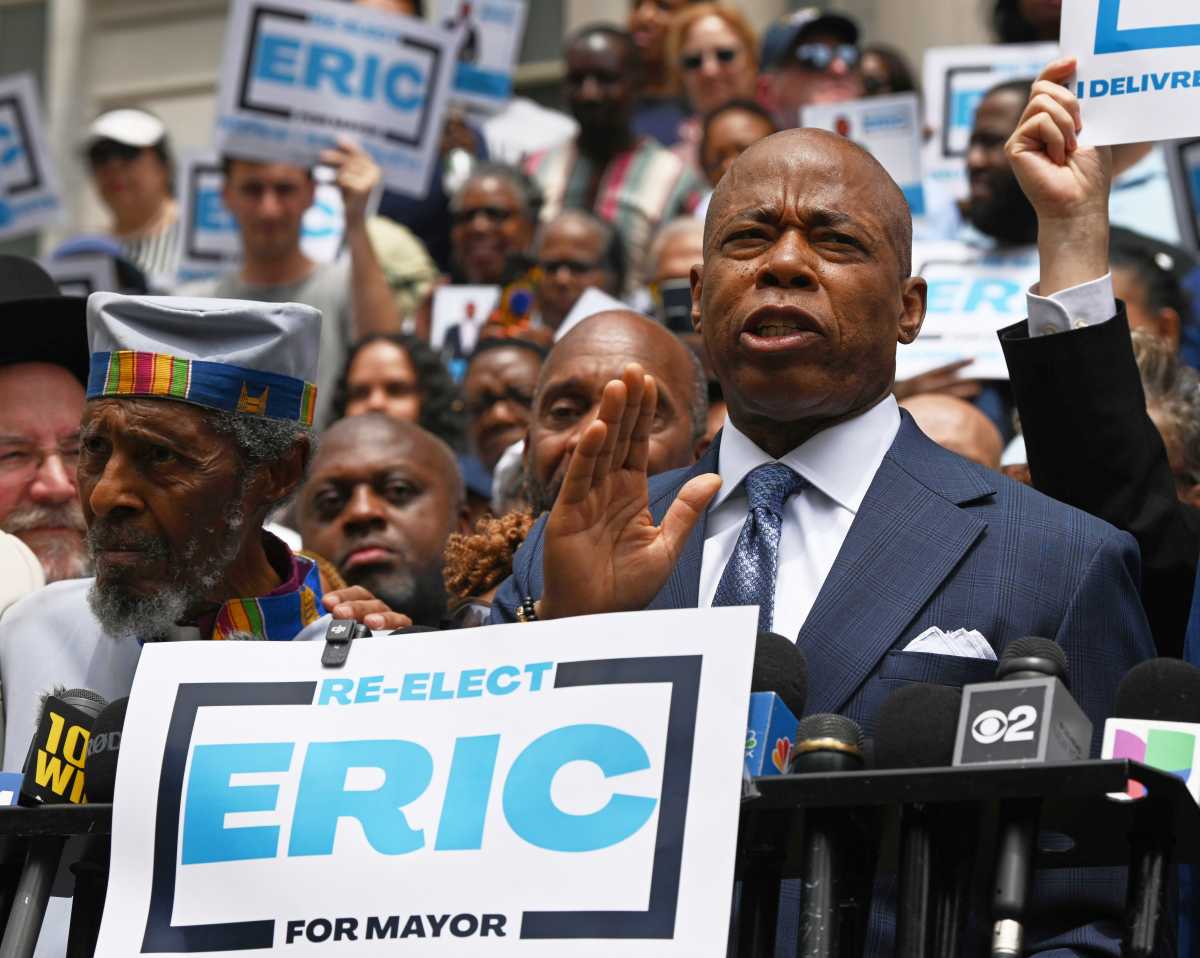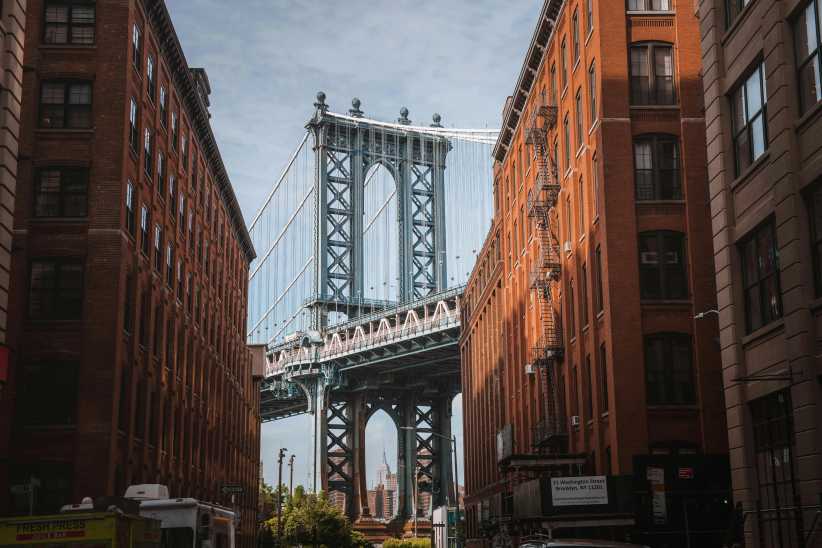With the help of a preservation group, the Brooklyn Heights Association
is promoting a plan to preserve several high-rise office buildings just
outside the Brooklyn Heights Historic District.
Calling it the “Borough Hall Skyscraper Historic District,”
BHA President Nancy Bowe touted the proposal at her group’s annual
meeting last month.
The compact district would “butt up against” the Brooklyn Heights
Historic District, according to the proposal’s coordinator, BHA governor
Alex Herrera, who also works for the New York Landmarks Conservancy. Its
boundaries would be Pierrepont, Livingston, Clinton and Court streets.
The purpose of the effort, he said, is to preserve some of the existing
high-rises for fear they could be torn down to make way for taller buildings
or larger complexes under the Downtown
Brooklyn Rezoning Plan approved last summer.
“These are very distinguished commercial buildings built by the best
architects of the day,” said Herrera, technical services director
of the Landmarks Conservancy. Herrera said the movement came about after
St. Francis College began demolition of the McGarry Library last year
at 180 Remsen St.
“Some of them have been abused and knocked around, but they could
be restored and really bought back to their best,” he said, and called
the proposed district a “real history lesson” on the days when
“the best architects in New York City were working on the commercial
buildings.”
“The worry is that the [city] Landmarks Preservation Commission is
just so overwhelmed with things that it just may take some time,”
Herrera said. That’s why we’re getting 186 Remsen St. before
it’s demolished,” said Herrera of a building he described as
a wedding-cake style commercial building that became residential and is
now vacant and for sale.
“It’s going to be bought, and it’s going to be demolished,”
he said.
Among the other buildings the BHA finds architecturally significant are
177, 181 and 185 Montague St., and 16, 32 and 44 Court St.
Although no application for the skyscraper district has yet been submitted,
Diane Jackier, a spokeswoman for the Landmarks Preservation Commission,
said the process requires full community involvement.
“The commission will look at it and review it, and if its something
we’re interested in going forward with, [the commission] reaches
out to all the owners to contact each one,” said Jackier.
Meanwhile, Meredith Hamilton, another BHA member, has also been working
to make up for lost time — decades of it — in the greater Downtown
Brooklyn area, fighting to save other buildings of architectural value
from demolition in the city’s third largest business district.
After a unanimous vote in December by the Community Board 2 landmarks
committee to landmark 505 Fulton St., a Romanesque Revival building built
in 1890 by Henry Offerman as a warehouse and department store, and 450-474
Fulton St., a 1924 neo-Classical limestone building at the corner of Hoyt
Street, Hamilton awaits the ruling of the Landmarks Preservation Commission
on the historic value of the two buildings near the Fulton Mall. The full
board approved the landmarking in January.
Though public testimony was presented in November, Jackier said they “held
the record open in order for the community board to review them.”
Which is better than the potential alternative: demolition.
With the passage of the Downtown Brooklyn Plan last July, many landowners
whose buildings fall within the 60-block area could stand to profit by
selling or demolishing their property to redevelop rather than go to the
expensive lengths a landmark would require.
Hamilton agrees that the idea of an extended landmark district for the
commercial area is a valuable one.
“Certainly the buildings at the edge of the district are just as
important as the buildings at the center of it,” she said. “They’re
very much of the same flavor; it’s of a certain era and it’s
quite wonderful.”
And Jackier said the LPC has been saw many applications for new landmark
boundaries.
“I can’t speak to a trend, but I do know that some existing
historic districts have asked to expand their boundaries and I would certainly
credit it to the success of landmarking and how it has increased the value
of homes and increased the stability of neighborhoods,” she said.
In Hamilton’s mind, landmark status is a win-win.
“I think the landlords are sitting on these gorgeous, beautiful buildings,
and it’s really a goldmine,” she said.
“What you worry about is that somebody comes along and knocks down
a building before it is landmarked or compromises it for an extension,
and it cannot be fixed.”
Some of her preservationist counterparts, like Cathy Wasylenko, would
agree. Known as a stalwart about landmark issues among CB2 members, she
thinks the whole rezoning plan was the wrong idea.
“There should be across-the-board landmarking of the city,”
Wasylenko told The Brooklyn Papers. “They never should have voted
to rezone and de-map in the first place; it’s like putting the cart
before the horse, really.”
But Tony Ibelli, who chairs the CB2 landmarks committee, said the downtown
rezoning isn’t the problem.
“Most everybody is for landmarking, but [the presenters] didn’t
contact the owners of the buildings,” said Ibelli, who said Michael
Weiss, executive director of the Metrotech Business Improvement District,
showed up at the committee meeting and testified against landmarking on
behalf of owners who feared being tagged with expensive renovations for
their incidental historical importance.
“Nobody’s really against it,” he said, “but we can’t
take things at face value. What about the owners? Are we going to be putting
them at a disadvantage?”
Michael Burke, director of the Downtown Brooklyn Council, said that while
he knew the apprehensions of the landowners, he thought it was possible
to strike a balance among the interests of preservationists, property
owners and the public.
“They have many concerns when you talk about landmarking their properties,”
Burke said. “Some depend on who they are and what they’re planning
on doing with the property. Others have serious problems with it.”
Hamilton agreed, saying that while she’d like to see many of the
upper levels of the older buildings along Fulton Mall renovated to use
for housing, she knows “the retail is so successful on the ground
floor, that in many cases they’ve just neglected the upper floors.
They’ve shut off extra stairs and use the extra space as another
storefront.”


